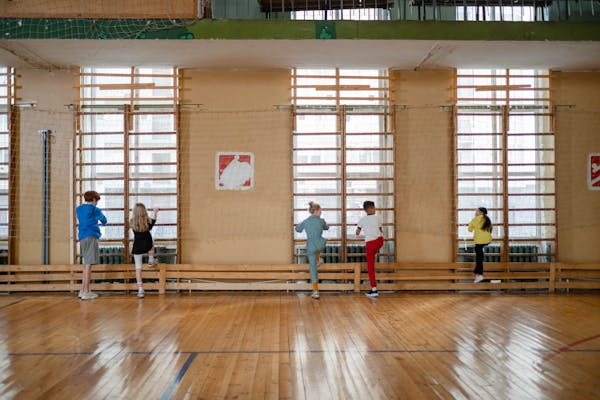The term “cognitive development” describes how our capacity for knowledge, comprehension, and understanding develops. Famous psychologist Jean Piaget studied cognitive development in the 20th century, and his conclusions are still applied today. According to his research, children’s relationships with one another help them learn about and comprehend the world around them. Piaget divided the four successive phases of childhood cognitive development:
- Sensorimotor period: birth to 24 months
- Pre-operational period: 2 to 7 years old
- Concrete operational period: 7 to 11 years old
- Formal operational period: 11 years to adolescence
Regardless of their culture or surroundings, Piaget thought that all children go through a continual process of moving from one stage to the next. There is a seamless transition from one level to the next and each step is necessary for the next. Finally, Piaget thought that after being exposed to experiences that are relevant to them and maturing to the required degree, children progress through the phases at different rates.
Piaget also introduced a number of other significant ideas. Piaget believed that adaptation and equilibrium are the two processes that lead to cognitive growth. The youngster must adapt by altering to match the needs of the situation. Assimilation and accommodation are the two subprocesses involved in adaptation.

.
Meta-cognition, perception, and memory are three instances of cognitive processes. Information may be encoded, stored, and retrieved by us thanks to the cognitive process of memory. There are four types of memory systems involved: working memory, short-term memory, long-term memory, and sensory memory.
Sensorimotor Period
During the sensorimotor stage, an infant uses their senses of touch, hearing, and sight to observe their environment. They can control their environment thanks to their senses and motor abilities.
This subsequently teaches them about their environment. Six substages comprise the sensorimotor stage:
1. Basic reflexes
2. Initial routines and fundamental cyclic responses
3. Reactions in secondary circles
4. Secondary circular reaction coordination
5. Circular tertiary reactions
6. The onset of ideas
Simple Reflexes
Reflex activities that are basic occur between birth and one month. Simple action patterns like sucking, biting, and grabbing are examples of reflexes, and they are fundamental to an infant’s “physical and cognitive life”.
First Habits and Primary Circular Reactions
Infants begin to integrate basic reflex actions between the ages of one and four months, integrating discrete self-focused action patterns. Because the newborn finds these patterns enjoyable or fascinating, they are repeated, which leads to the formation of habits. Thumb sucking is one instance of a repetitive circular response that develops into a habit.
Secondary Circular Reactions
The baby becomes more interested in their surroundings between the ages of 4 and 8 months. The shift in attention from the self to the outside world is known as a secondary circular reaction. Shaking a rattle is an illustration of a secondary circular reaction.
Coordination of Secondary Circular Reactions
The emergence of goal-directed behavior happens between 8 and 12 months. Infants learn about cause-and-effect linkages and object permanence through manipulating items. An illustration of object permanence would be a baby reaching for a toy that is concealed by another toy and being aware of it even if it is not visible.

Tertiary Circular Reactions
Children start doing small experiments to gain knowledge about their surroundings between the ages of 12 and 18 months. They get enthralled by the characteristics of objects and begin to use trial and error tactics to solve difficulties. To see what happens, try dropping some food on the floor as an example of a tertiary circular reaction.
Beginning of Thought
The youngster starts to use understanding and creativity between the ages of 18 months and 2 years. Make-believe activities, accepting others while focusing on oneself, intricate schematic comprehension, and internalization of images of past experiences are all possible during this stage. Imagine a toddler playing with an imaginary friend—that would be an illustration of the origins of thought.
Preoperational Stage
The child starts to employ symbolic thinking between the ages of two and seven, creating mental images of concepts and events. There is less reliance on sensorimotor activity during this period to comprehend their surroundings. The use of gestures, words, and symbols improves communication. A child who notices their parents picking up keys and then asks if they are leaving is an example of a preoperational stage child. At this point, three key things happen.
- Conservation
- Centration
- Geocentricism
Conservation
The concept of conservation refers to the knowledge that a quantity remains constant despite changes in its physical form or organization. A young toddler is shown two drinking glasses of varying sizes as an illustration of conservation. From a short, wide glass to a higher, narrow glass, milk is poured. I ask the child if the tall glass has any more milk in it. They comprehend conservation if their answer is negative.
Centration
Making decisions based just on one aspect of a stimulus or situation and ignoring all other aspects is known as centration. Children’s “perceptual array of sight” often focuses on one striking feature or detail. A young toddler concentrating on how many cookies each individual receives, regardless of the size of each biscuit, is an example of centration.
Geocentricism
When a child does not consider other people’s opinions or view the world from their perspective, it is referred to as geocentricism. When a young child with an older sibling believes that every other youngster also has an older sibling, this is an example of geocentricism. Geocentricism is not a persistent behavior and is not the same as selfishness.
Concrete Operational Stage
Between the ages of 7 and 12, children begin to think logically instead of just perceiving things. They are able to “decenter”—that is, concentrate on other facets of a stimuli. Furthermore, they are able to comprehend the idea of reversibility, or the ability to admit that a stimulus’s alteration can be undone. Reversibility can be demonstrated by forming a thin rope out of playdoh and then reshaping it into a ball.
Formal Operational Stage
Children begin to enter the formal operational stage, where they can reason and think abstractly, at the age of 11 or 12. They may use both deductive and inductive thinking to solve issues and carry out tests. A toddler who can solve algebraic problems is an example of the formal operational stage.
